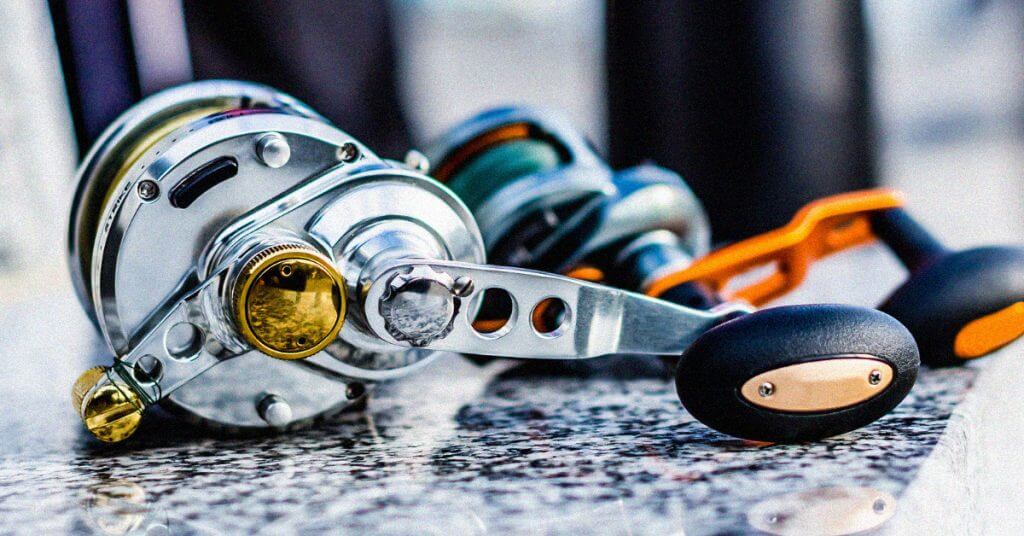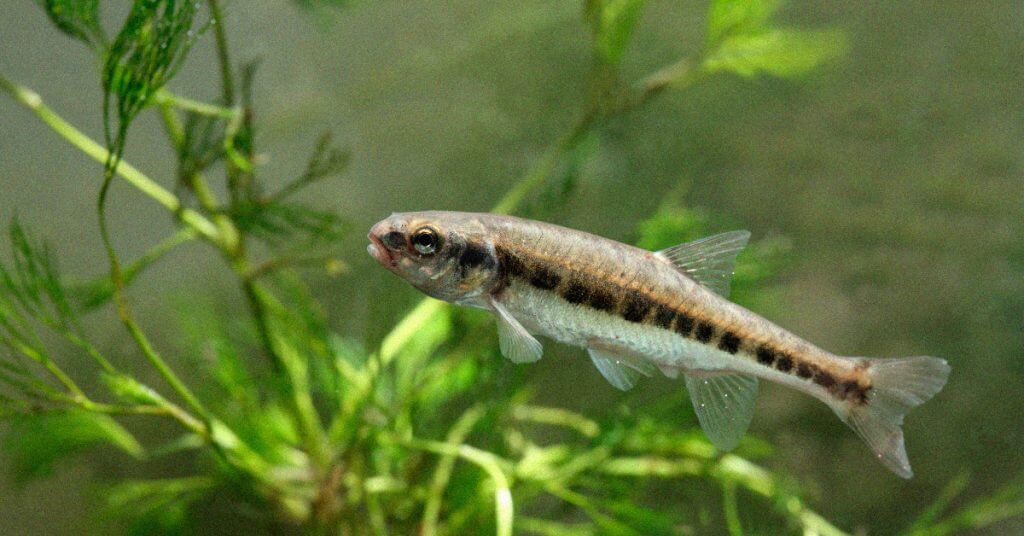Muddy water bass fishing can be challenging but is still possible even when visibility is low.
When seasons change from winter to spring, all the rain causes the water to rise, consequently, filling the lake with sediment from runoff.
Leaving anglers at all skill levels asking how to fish muddy water.
Even though you’ll have to switch up a few of your standard techniques when fishing in muddy conditions, catching bass is not only possible but also rewarding if you understand a few simple fishing tips.
Don’t miss our YouTube video, where Wesley Littlefield offers some of his best muddy water bass fishing tips!
Table of Contents
How Does Muddy Water Affect Bass?
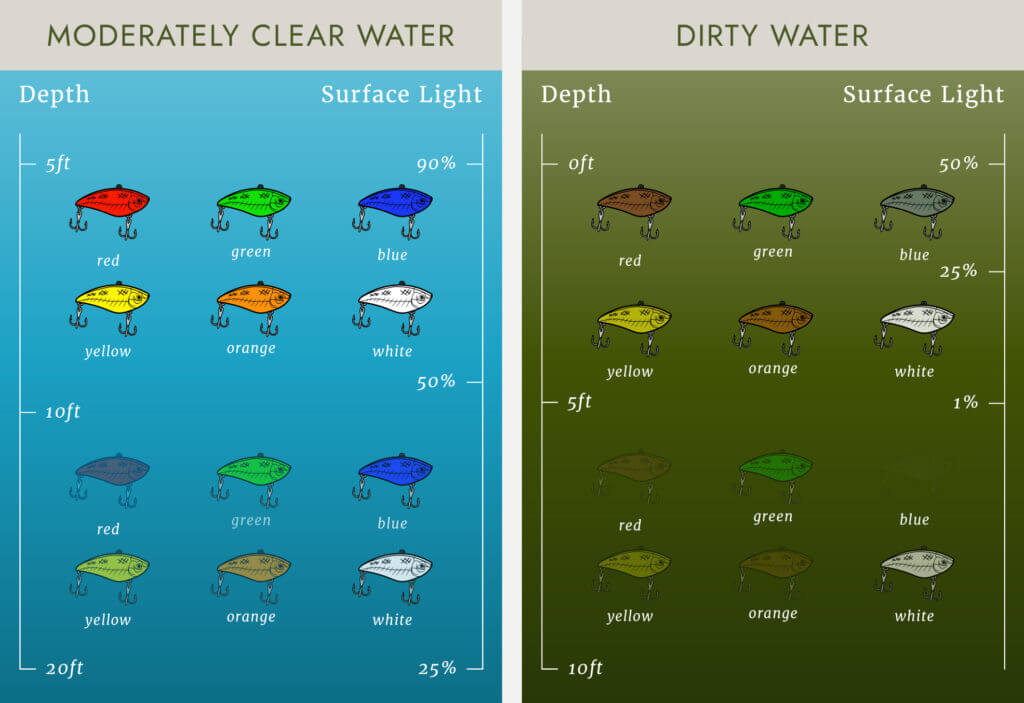
When the waters are clear, bass head right to the bottom to look for food.
But when the visibility gets too low, like after a heavy downpour, the bass prefer to seek spots where they can go unnoticed and bide their time as they wait for potential meals.
Both smallmouth and largemouth bass will be pushed up to shallow water to eat. Try looking for runoffs in the reservoir; these areas attract baitfish, which will also attract bass.
Another thing to consider is that due to their limited visibility, bass are more likely to strike at slower retrieve speeds when fishing in muddy water. Slower speeds give the fish more time to see and react to your lure or bait.
So, how can you use this information to your advantage? Experiment with different speeds until you find one that produces results.
Best Location for Fishing in Muddy Water
When fishing in muddy water, the best location to cast your line is from the shore.
When approaching your target spot, it is essential to be as quiet as possible. Look closely at the bank and identify areas where bass may be hiding.
Once you have identified a potential spot, make your cast and wait for a bite.
Look for any large structure near this area, like stumps,logs, or rocks; bass love hanging out near structures because they provide cover from predators and give them access to food sources like insects and smaller fish.
Best Bass Lures for Muddy Water
Once you settle on a spot, the next most important consideration is the lure you choose. lures such as spinnerbaits, crankbaits, and Texas rigs attract bass in muddy water.
Stick with louder and larger baits that are easier for the bass to notice. In murky water conditions, it pays to use bigger lures that create more noise and vibration underwater.
The movement and noise help attract fish by creating a better target for them to hone in on with their lateral lines, which are sensitive organs used by fish to detect movement underwater.
Combining the best lures with the best location for muddy water is the key to success.
But, no matter what type of lure you choose, it is important to remember that patience is key when fishing in muddy water. Bass will often take their time before biting, so don’t give up too soon.
The Best Lures to Use When Fishing near Runoffs
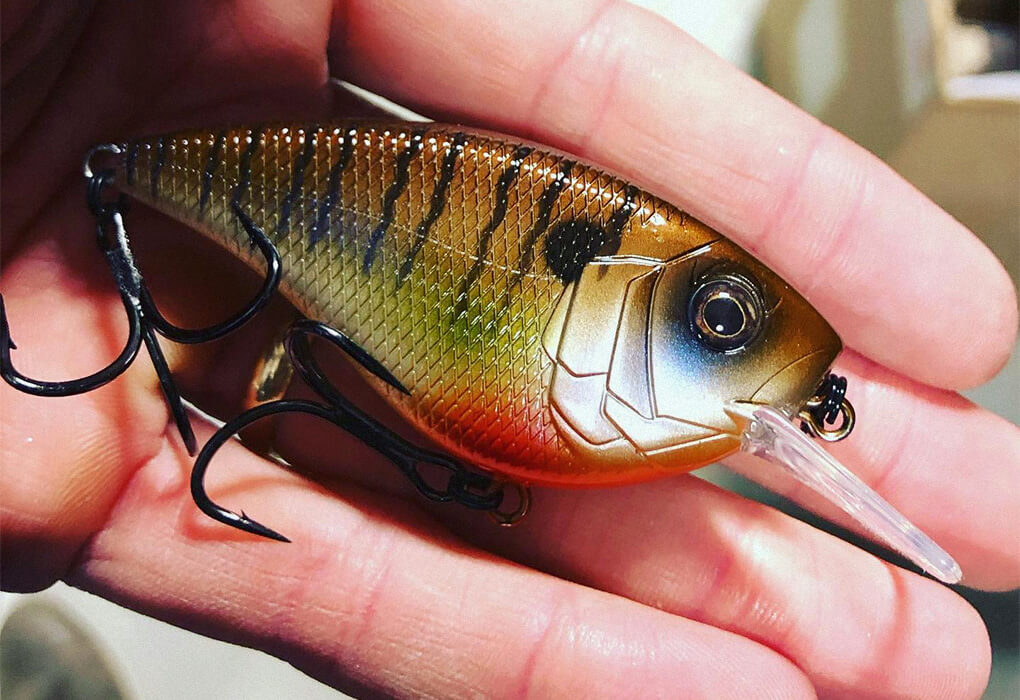
Spinnerbaits
Spinnerbaits with Colorado blades are an excellent choice for fishing in murky water because they create a lot of vibration in the water that can draw attention from the fish even if they can’t see it very clearly.
Additionally, they come in a wide variety of colors, so you can pick one that stands out in the murkiness.
Swim Bait
Swimbaits work well for murky waters because they move through the water with a natural swimming motion.
They also come in many sizes, so you can choose one that will match whatever size fish you’re trying to catch.
Swimbaits often have loud rattles or movement, which is what you want to attract even more attention from the fish than standard bait would.
Chatterbait
Chatterbaits are essentially hybrid spinnerbaits with a jighead attached to them instead of a traditional spinnerbait head.
This allows them to create more vibration and noise than regular spinnerbaits. This is great when fishing in muddy water because sound travels farther underwater when visibility is low.
Chatterbaits are generally at their best when fished slowly, whether that’s rolling them over and around a rock pile or popping them gently from one spot to the next.
Moving the bait faster will cause the blade to vibrate more, creating a dinner bell sound that will attract bass.
Squarebill Crankbaits
Squarebill crankbaits are a type of fishing lure designed to mimic the behavior of baitfish. They are typically made from plastic or wood and feature a flat, square-shaped bill that causes them to dive down when retrieved.
Squarebill crankbaits come in a variety of sizes, shapes, and colors and can be used to target many species of fish, including bass, walleye, pike, and trout.
When retrieved correctly, these lures will create an erratic swimming action that mimics the movements of small baitfish, which can attract predatory fish.
These baits can be fished in shallow or deep water and are often used around covers such as rocks, logs, vegetation, and docks.
Best Lures to Use for Boat Docks And Launch Ramps
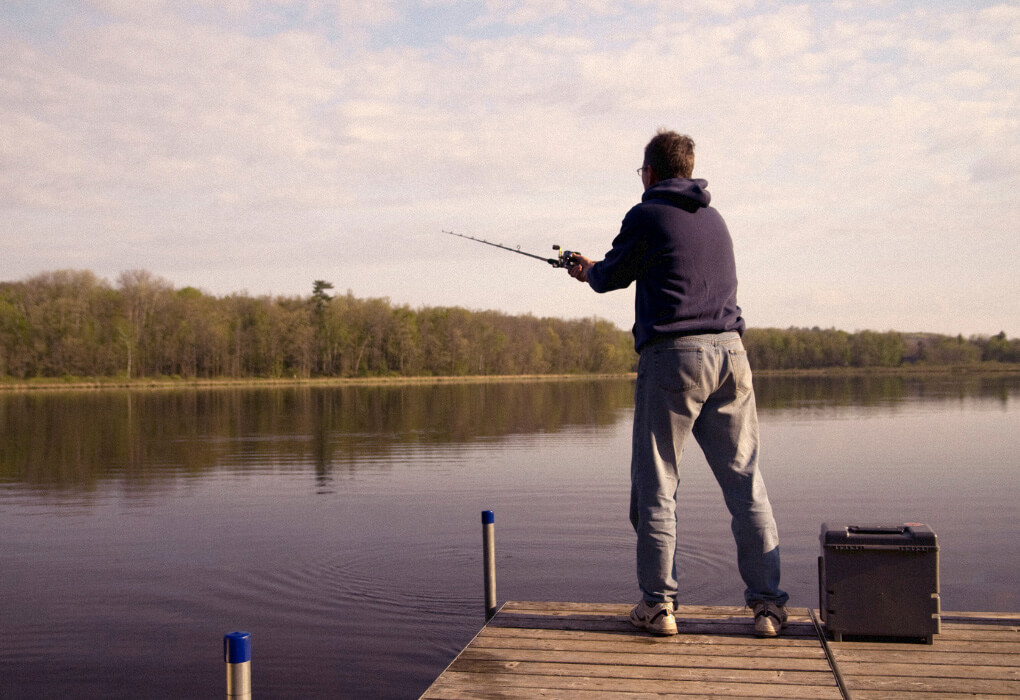
- Spinnerbait with Colorado blades
- Bladed jig
- Texas rigged worm
- Crankbait
- Jig
Bladed Jig
Bladed Jigs are another great option for fishing in murky waters as they create vibration and movement, which helps them stand out.
The size, shape, and color of the chatterbait can all be customized depending on the desired presentation.
Anglers can rig their bladed jig with different trailers, like grubs or soft plastics to increase their effectiveness.
This makes them an extremely versatile lure.
Texas Rigged Worm or Creature Bait
Texas rigging is a technique for rigging soft plastic baits such as worms, tube baits, craws, and creature baits.
Rigging soft plastic bait like worms, tube baits, craws, and creature baits with a Texas Rig is a popular fishing technique.
The hook is threaded onto the line with the point exposed and the weight ahead of it. This way, the bait can move around freely and look more natural in the water.
You can also use different sized weights to fish in different depths and change your presentation depending on the conditions.
Texas rigs are used to catch both largemouth bass and smallmouth bass.
Crankbait
A crankbait is a type of fishing lure that is designed to imitate the swimming motion of a baitfish or crawfish.
It typically has two treble hooks and comes in a variety of shapes, sizes, and colors. Crankbaits are usually cast into the water and then reeled to your desired depth.
They can be used to target fish at specific depths and are popular among bass anglers who need to cover water quickly.
Large Jig
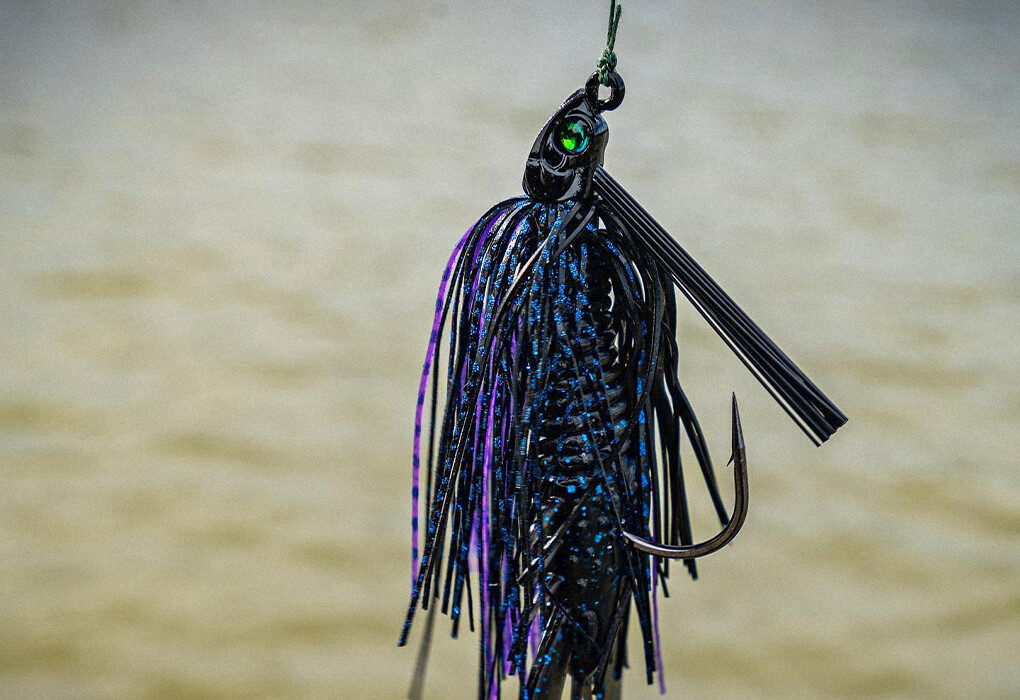
When trying to target larger bass lurking deep below boat docks or launch ramps, a large flipping jig can be your best bet.
The size of the jig depends on the type of water you are fishing in and the size of the bass you are targeting.
Generally, larger jigs are used in deeper waters while smaller jigs can be used in shallow areas.
Swim jigs can be fished with a variety of techniques including casting, trolling, and vertical jigging.
Plus, they have built-in rattles that make plenty of noise even in murky conditions, which you want as it helps draw the fish’s attention.
Best Colors for Lures in Muddy Water Fishing
Generally, anglers should try bright colors such as chartreuse or yellow when bass fishing in muddy water. The brighter lure will help attract the attention of bass with limited visibility in murky conditions.
However, if you aren’t getting any success with brighter lures, then switching to darker colors like black or brown will help anglers blend into their surroundings and match the baitfish that bass feed on most often.
While it may seem counterintuitive, dark color lures like black can create a great silhouette, especially when there is little visibility in the water.
Should You Use Scented Baits in Bass Fishing?
In short, absolutely.
Scented baits work because they use scent to draw bass in from further distances. With visibility reduced in muddy conditions, it becomes more difficult for fish to locate their prey by sight alone.
This is where the scent comes in—it helps them find what they’re looking for even when they can’t see it well.
The key to success when using scented baits is selecting the right one for the job. Certain scents will attract certain species of fish. Anise (licorice) or garlic-based scents work well for bass.
You’ll also want to make sure that your bait has enough scent to be noticeable in muddy water. Some lures come pre-scented with special additives that help them stand out more than others.
Frequently Asked Questions
Can you catch bass in muddy water?
Yes, you can catch bass in muddy water. The reduced water clarity just means you’ll need to adjust your approach.
What bait to use for bass in muddy water?
The best bait for bass in muddy water is one that creates a lot of vibration and is easy to see. The noisier and bigger commotion the better. Think chatterbaits and spinnerbaits.
Where do bass go when the water gets muddy?
Bass don’t necessarily go anywhere when the water gets muddy. They’re often easier to catch in the shallows when the water gets muddy because of the low visibility.
If the water is typically clear the bass will search for clearer water so begin your search in areas that are the clearest.
These are often areas that get muddy first but are also the areas that clear up first, such as creeks.
Final Thoughts
Every year, lots of big bass are caught in dirty water and clear water.
The real way to be a successful angler is to be ready to try different methods as soon as needed to catch fish when the usual methods don’t work.
Ultimately what you want to remember when bass fishing in muddy water: you can definitely catch a big one.
The louder the better when it comes to lures, and scents are your friend.


